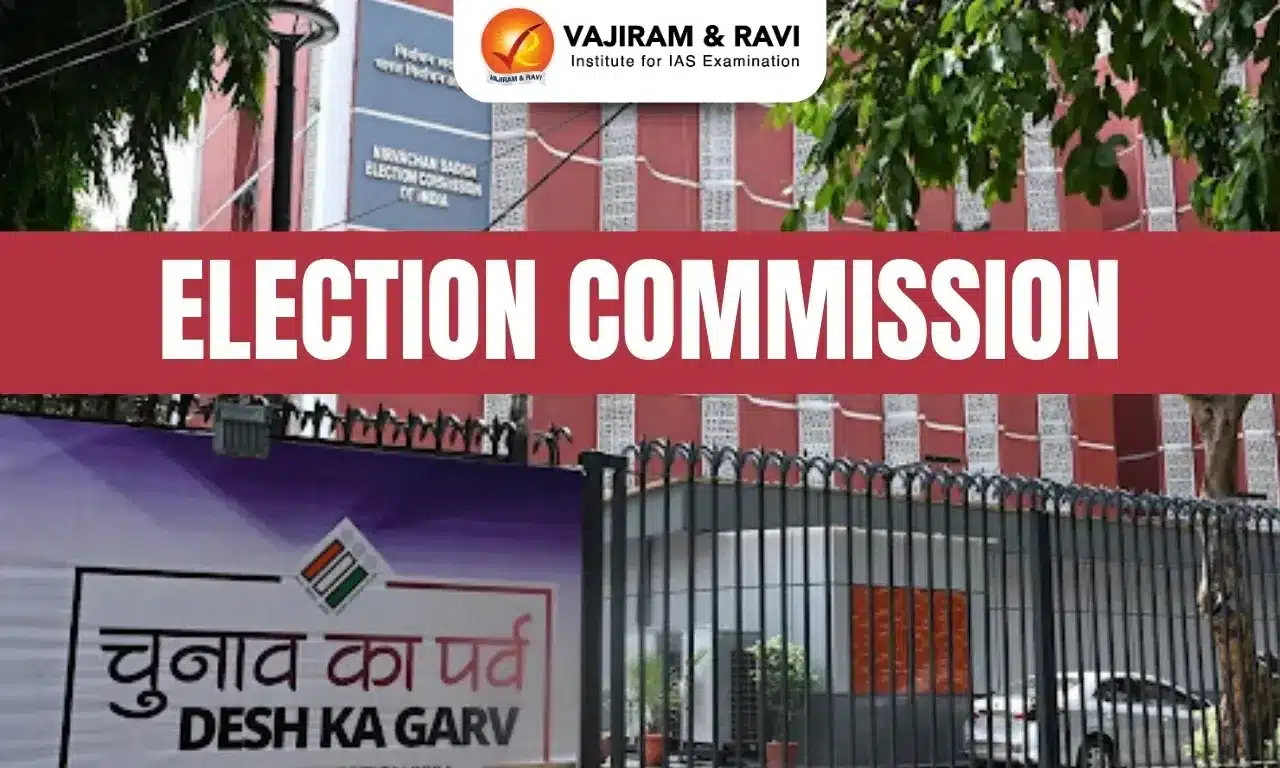Election Commission Latest News
- The Election Commission of India is in the news over the Bihar Special Intensive Revision exercise, which led to mass voter deletions and Supreme Court scrutiny on electoral roll transparency.
Introduction
- The Election Commission of India (ECI), one of the most vital constitutional bodies safeguarding India’s democracy, is under increasing scrutiny.
- Allegations of electoral roll discrepancies, the controversial Special Intensive Revision (SIR) in Bihar, and political criticism have placed the Commission in the spotlight.
- Recent interventions by the Supreme Court (SC) and protests by the Opposition have intensified debates around the ECI’s role, autonomy, and credibility.
Constitutional Mandate of the Election Commission
- The Election Commission of India is a permanent constitutional body entrusted with the superintendence, direction, and control of elections to Parliament, state legislatures, and the offices of the President and Vice-President.
- Initially headed only by a Chief Election Commissioner (CEC), it now comprises two additional Election Commissioners, forming a three-member body.
- Its mandate is to ensure free, fair, and impartial elections, the cornerstone of Indian democracy.
The Appointment Controversy
- The Chief Election Commissioner and Other Election Commissioners (Appointment, Conditions of Service and Term of Office) Act, 2023 reshaped the appointment process.
- The selection committee now includes the Prime Minister, a Union Minister, and the Leader of the Opposition.
- Opposition parties argue this structure compromises independence, as the government side holds a 2:1 majority, raising fears of bias in appointments.
Allegations of Voter Roll Manipulation
- The EC has faced repeated accusations from Opposition parties:
- Maharashtra (2019-20): Allegations of lakhs of voters being added between Lok Sabha and Assembly polls.
- Haryana and Delhi: Similar claims of manipulated voter lists before the Assembly elections.
- Karnataka (2024 Lok Sabha): INC alleged large-scale discrepancies in the Mahadevapura constituency, including duplicate and bulk registrations.
- These allegations have renewed calls for machine-readable voter rolls, which the EC has resisted, citing cybersecurity concerns, a stance earlier upheld by the SC.
The Bihar SIR and Supreme Court Intervention
- The EC’s Special Intensive Revision in Bihar, announced in June 2025 ahead of Assembly polls, mandated voters to submit proof of birth and citizenship.
- This led to the deletion of 65 lakh names from the electoral rolls, reducing Bihar’s voter base from 7.89 crore to 7.24 crore.
- The SC, in an interim order, directed the EC to:
- Publish booth-wise lists of deleted names.
- Provide reasons for deletion (death, migration, duplication, etc.).
- Accept Aadhaar as valid proof of identity.
Challenges of Migrant Voters
- India’s internal migrant population continues to face barriers in exercising voting rights.
- Migrants must travel back to their registered constituencies, which imposes costs and reduces turnout.
- Experts stress the need for a cheap, transparent, and secure system, tailored to the realities of poor migrants, unlike models in advanced economies.
Political Fallout and Growing Protests
- The controversy has escalated politically:
- INC’s press conference on voter roll manipulation spurred the Opposition to demand accountability.
- Protests outside the EC office led to the arrests of opposition MPs.
- Parliament’s Monsoon Session has faced repeated disruptions over the Bihar SIR issue.
Broader Concerns for Electoral Integrity
- The unfolding events raise critical challenges for the EC:
- Ensuring Transparency – Addressing claims of voter roll manipulation.
- Protecting Voter Rights – Preventing mass exclusions while maintaining accuracy.
- Balancing Cybersecurity and Accessibility – Providing machine-readable rolls without compromising data safety.
- Safeguarding Institutional Independence – Resisting political influence in appointments and decision-making.
Source : TH
Last updated on December, 2025
→ Check out the latest UPSC Syllabus 2026 here.
→ Join Vajiram & Ravi’s Interview Guidance Programme for expert help to crack your final UPSC stage.
→ UPSC Mains Result 2025 is now out.
→ UPSC Notification 2026 is scheduled to be released on January 14, 2026.
→ UPSC Calendar 2026 is released on 15th May, 2025.
→ The UPSC Vacancy 2025 were released 1129, out of which 979 were for UPSC CSE and remaining 150 are for UPSC IFoS.
→ UPSC Prelims 2026 will be conducted on 24th May, 2026 & UPSC Mains 2026 will be conducted on 21st August 2026.
→ The UPSC Selection Process is of 3 stages-Prelims, Mains and Interview.
→ UPSC Result 2024 is released with latest UPSC Marksheet 2024. Check Now!
→ UPSC Prelims Result 2025 is out now for the CSE held on 25 May 2025.
→ UPSC Toppers List 2024 is released now. Shakti Dubey is UPSC AIR 1 2024 Topper.
→ UPSC Prelims Question Paper 2025 and Unofficial Prelims Answer Key 2025 are available now.
→ UPSC Mains Question Paper 2025 is out for Essay, GS 1, 2, 3 & GS 4.
→ UPSC Mains Indian Language Question Paper 2025 is now out.
→ UPSC Mains Optional Question Paper 2025 is now out.
→ Also check Best IAS Coaching in Delhi
Election Commission FAQs
Q1. What is the role of the Election Commission of India?+
Q2. Why is the EC facing criticism over electoral rolls?+
Q3. What is the Special Intensive Revision (SIR) in Bihar?+
Q4. What has the Supreme Court directed the EC to do in Bihar?+
Q5. Why are migrant voters a major challenge for Indian elections?+
Tags: election commission mains articles upsc current affairs upsc mains current affairs

















